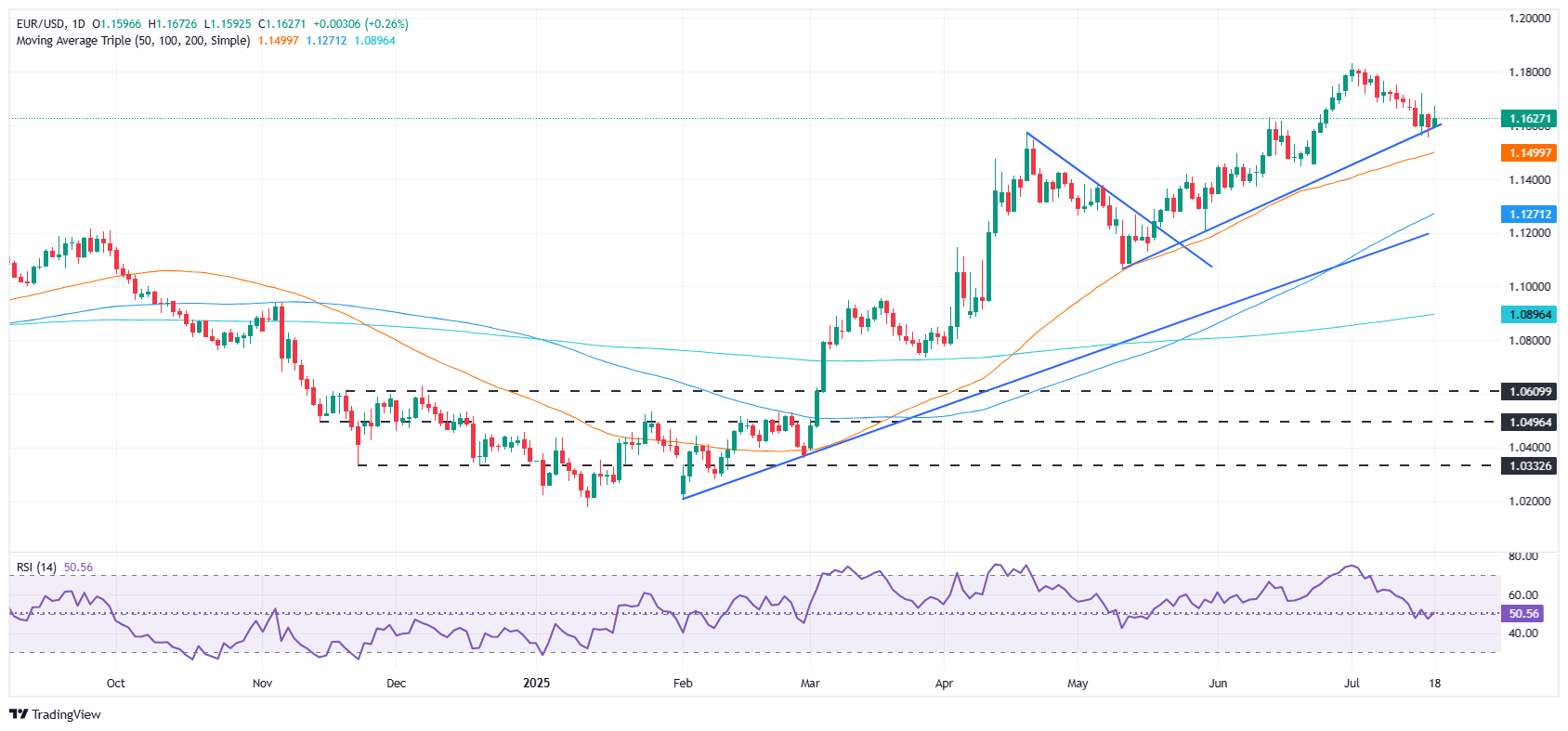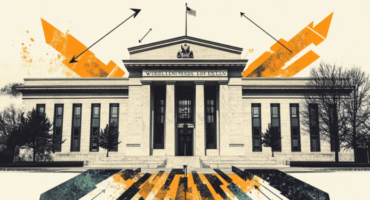
- Fed’s Waller Backs July Rate Cut, Sending Treasury Yields and US Dollar Downward
- US Consumer Sentiment Improves, Inflation Expectations Decline According to UoM Survey
- Key Economic Events: ECB Decision, EU PMIs, and US Economic Data in the Spotlight Next Week
The EUR/USD pair closed Friday’s trading session higher by over 0.26%, influenced by a weaker US Dollar after dovish remarks from Fed Governor Christopher Waller, which impacted US Treasury yields. However, an uptick in Consumer Sentiment limited the Euro’s advance, with the pair trading at 1.1626 at the time of writing.
Wall Street concluded the day on a positive note, buoyed by Waller’s support for a July rate cut. Nonetheless, recent statements by Chicago Fed President Austan Goolsbee, who has adopted a more cautious tone following the latest CPI report indicating initial tariff-induced inflation in goods, tempered the optimism.
On the data front, the University of Michigan (UoM) Consumer Sentiment Index for July indicated increased optimism among households about their financial prospects and a reduction in inflation expectations. Meanwhile, housing data also showed improvements, while the European economic calendar was light, with market participants looking for signs of a potential trade agreement between the European Union (EU) and the United States (US).
Looking ahead to next week, the EU economic calendar is set to include Consumer Confidence, Flash PMIs for July, and the European Central Bank (ECB) monetary policy decision. In the US, the agenda will cover housing data, S&P Global Flash PMIs, Initial Jobless Claims, and Durable Goods Orders.
Daily Market Movers: EUR/USD Surpasses 1.1600 Despite Strong US Data
- The University of Michigan’s preliminary Consumer Sentiment Index climbed to 61.8 in July, up from 60.7 in June and marginally above the forecast of 61.5. Joanne Hsu, the survey director, noted, “Consumers are unlikely to regain their confidence in the economy unless they feel assured that inflation is unlikely to worsen, such as through stabilized trade policies.”
- The UoM survey also indicated a decrease in inflation expectations, with the long-term (5-year) outlook revised down to 3.6% from 4%, and one-year expectations reduced to 4.4% from 5%.
- Fed Governor Christopher Waller acknowledged the overall stability of the labor market but noted less robust conditions in the private sector. He expressed support for a potential rate cut in July, although he emphasized his preference to consider all perspectives before making a final decision.
- Chicago Fed President Austan Goolsbee remarked that new tariffs are counterproductive in combating inflation, suggesting a need for a cautious approach to policy adjustments if inflationary pressures intensify.
- Recent US economic indicators have presented a mixed view on inflation. The Consumer Price Index (CPI) is nearing the 3% threshold, while the Producer Price Index (PPI) indicates some easing. However, unexpectedly strong Retail Sales data suggest that price increases from new tariffs are driving much of the spending, rather than genuine demand growth.
- Several ECB policymakers, including Mario Centeno, De Guindos, Vujčić, and Villeroy, have hinted at a possible pause or rate cut. Fabio Panetta also supported easing measures, citing increasing risks to economic growth.
- Conversely, Isabel Schnabel and Robert Holzmann have advocated for maintaining current rates, calling for more data before any policy adjustments.
EUR/USD Technical Outlook: Trading Range Between 20 and 50-day SMA, Maintaining Levels Above 1.1600
The EUR/USD is experiencing sideways trading, with a slight upward bias from a market structure standpoint. However, the Relative Strength Index (RSI) suggests a neutral market dynamic, indicating no clear control by either buyers or sellers.
If EUR/USD ascends past 1.1650, it could challenge the 20-day Simple Moving Average (SMA) at 1.1692. Surpassing this level may set the stage for further gains towards 1.1700 and 1.1800.
Conversely, a drop below 1.1600 might lead to a test of the 1.1550 support level, followed by the 50-day SMA at 1.1497. If these support zones are breached, the next significant support for bulls would be the 100-day SMA at 1.1266.










Leave a Comment